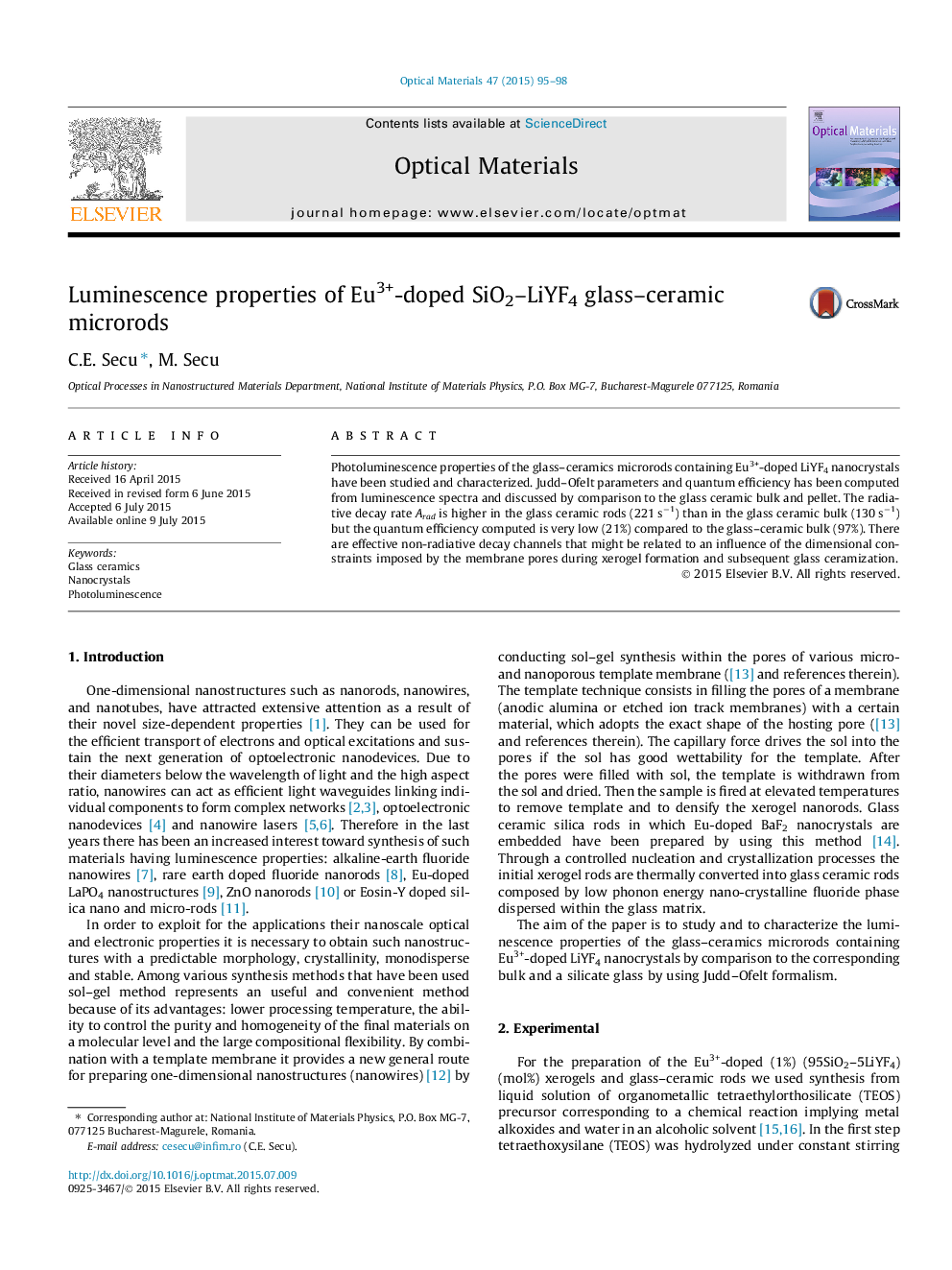| Article ID | Journal | Published Year | Pages | File Type |
|---|---|---|---|---|
| 1493685 | Optical Materials | 2015 | 4 Pages |
•Photoluminescence of Eu3+-doped LiYF4 glass–ceramic microrods have been studied.•Judd–Ofelt parameters and quantum efficiency have been computed from luminescence spectra.•Radiative decay rate is higher than in the bulk but the quantum efficiency is very low.
Photoluminescence properties of the glass–ceramics microrods containing Eu3+-doped LiYF4 nanocrystals have been studied and characterized. Judd–Ofelt parameters and quantum efficiency has been computed from luminescence spectra and discussed by comparison to the glass ceramic bulk and pellet. The radiative decay rate Arad is higher in the glass ceramic rods (221 s−1) than in the glass ceramic bulk (130 s−1) but the quantum efficiency computed is very low (21%) compared to the glass–ceramic bulk (97%). There are effective non-radiative decay channels that might be related to an influence of the dimensional constraints imposed by the membrane pores during xerogel formation and subsequent glass ceramization.
